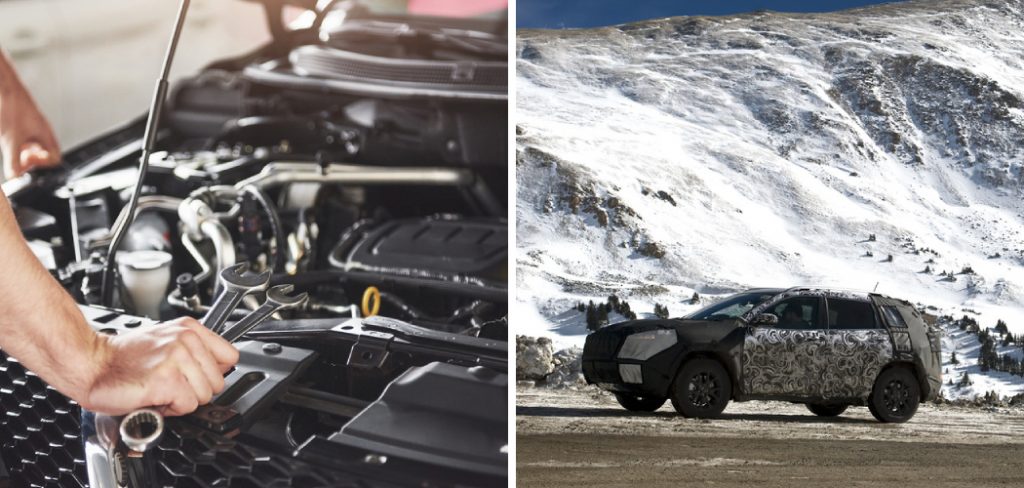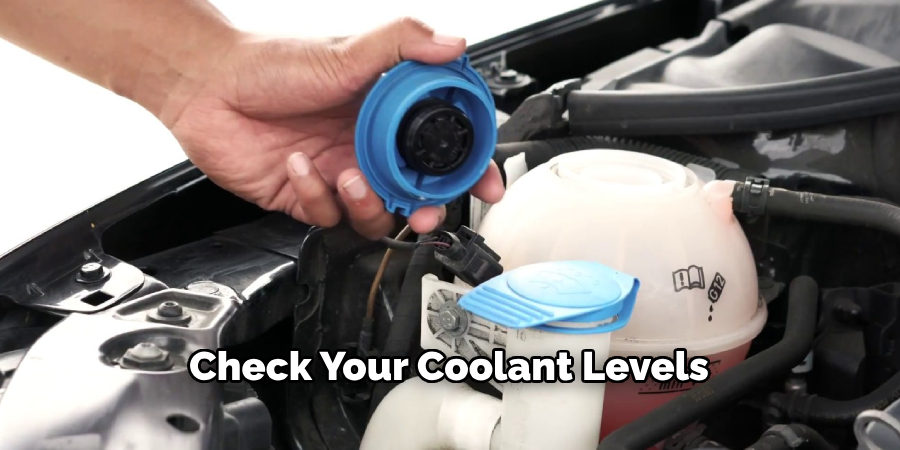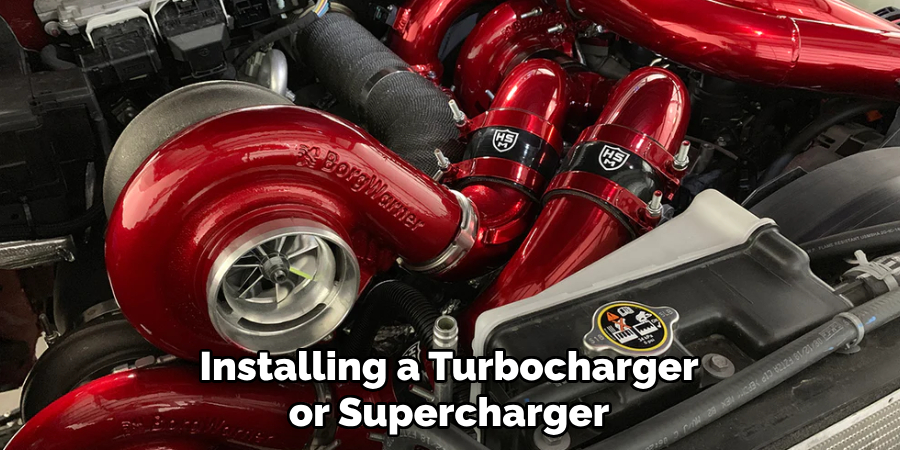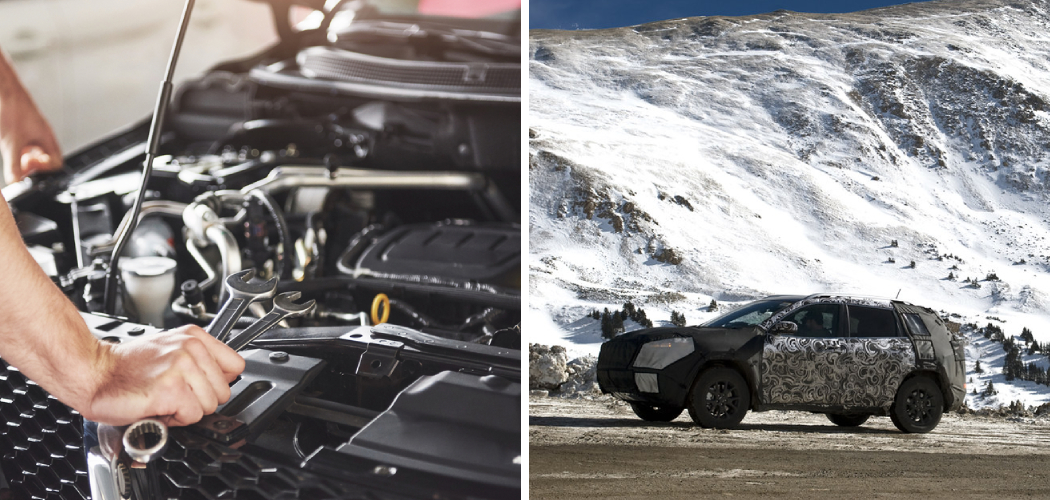Ever notice how your car feels like it’s missing something when driving at high elevation? You’re not alone if turning the key just doesn’t feel the same when you’re driving in the mountains or plains. Many factors can affect your vehicle’s performance at higher altitudes due to lower air pressure and oxygen levels.

From sluggish acceleration to rough idling, there are a few simple things you can do to help your car adjust to life at elevation and get you where you need to go more smoothly.
In this post on how to adjust your car for high altitude, we’ll explore how altitude can impact your fuel system and engine tuning, and provide some tips on adjustments you can make yourself to help compensate. By the end, you’ll feel more confident getting behind the wheel no matter what the road ahead may bring.
Needed Materials
- Tire Pressure Gauge
- Oxygen Sensor Cleaning Kit
- Spark Plug Wrench and Gapping Tool
- Air Filter Replacement Parts (if Necessary)
11 Step-by-step Guidelines on How to Adjust Your Car for High Altitude
Step 1: Check Your Tire Pressure
The first and most important step when driving at high altitudes is to make sure your tire pressure is correct. At higher elevations, the air pressure outside of your vehicle decreases, which can cause your tires to lose air pressure as well. This can lead to under-inflated tires, resulting in decreased fuel efficiency and handling issues.
Step 2: Check Your Oxygen Sensor
Oxygen sensors are a crucial component of your vehicle’s engine, responsible for measuring the air-to-fuel ratio and adjusting it accordingly. At higher elevations, there is less oxygen in the air, meaning your car will need to run with a higher air-to-fuel ratio to compensate.

Over time, oxygen sensors can become dirty or malfunction, leading to inaccurate readings and affecting your vehicle’s performance. It’s essential to clean or replace your oxygen sensor regularly at high altitudes.
Step 3: Check Your Spark Plugs
Spark plugs are responsible for igniting the fuel in your engine, and at higher altitudes, their performance can be impacted. It’s essential to check your spark plugs for wear and tear and replace them if necessary. You should also adjust the gap between the electrodes according to your car manufacturer’s specifications, as this can affect engine timing and combustion efficiency.
Step 4: Replace Your Air Filter
A clogged or dirty air filter can restrict airflow to your engine, which can cause efficiency issues at higher altitudes. It’s recommended to replace your air filter every 10,000 miles or more frequently if you regularly drive in dusty conditions. This will help ensure proper airflow and fuel efficiency. You can also consider upgrading to a performance air filter designed for higher elevations.
Step 5: Adjust Your Fuel Mixture
At high elevations, your vehicle may require a different air-to-fuel ratio to maintain optimal performance. This can be achieved by adjusting the fuel mixture using the carburetor or fuel injection system. It’s recommended to consult your vehicle’s manual or a professional mechanic for the correct adjustments. You can also consider installing a high-altitude kit or carburetor jet for more precise tuning.
Step 6: Check Your Coolant Levels

Coolant plays a crucial role in regulating engine temperature, and at higher altitudes, engines can run hotter due to lower air pressure. It’s essential to check your coolant levels regularly and top up if necessary, to prevent overheating and potential engine damage. If your coolant levels are consistently low, there may be a leak that needs to be addressed. Although rare, some vehicles may require different coolant blends for high-altitude driving.
Step 7: Adjust Your Timing
Timing refers to the precise moment when fuel is injected into the engine and ignited by a spark plug. At higher altitudes, this timing may need to be adjusted to compensate for lower air pressure and reduced oxygen levels. Again, it’s recommended to consult your vehicle’s manual or a professional mechanic for proper timing adjustments. But if you’re confident, you can also make small adjustments to the distributor and ignition coil yourself.
Step 8: Choose the Right Fuel
At high altitudes, engines may require higher octane fuel due to lower air pressure. This can help prevent knocking and improve overall performance. Consider filling up with premium gasoline if you regularly drive in high-altitude areas. But be sure to check your vehicle’s manual first, as using the wrong fuel can cause damage. The recommended fuel type is usually indicated on the inside of the fuel filler door.
Step 9: Upgrade Your Ignition System
If you frequently drive at higher altitudes, you may want to consider upgrading your ignition system. A more powerful ignition system can help improve engine performance and compensate for lower air pressure and oxygen levels. The cost of upgrading can vary, so it’s essential to research and consult with a professional mechanic before making any changes.
Step 10: Avoid Idling for Extended Periods
Idling for extended periods can cause your engine to run inefficiently, especially at high altitudes. If you’re stuck in traffic or waiting for a scenic viewpoint, consider turning off your engine to conserve fuel. This will also help prevent carbon buildup in your engine and reduce harmful emissions. if you do need to idle for an extended period, consider revving your engine occasionally to help clear out any carbon deposits.
Step 11: Consider a Turbocharger or Supercharger

If you frequently drive at high altitudes, installing a turbocharger or supercharger can significantly improve your vehicle’s performance. These devices compress air entering the engine, providing more oxygen to burn with fuel, resulting in better power and efficiency. However, it’s essential to consult with a professional mechanic before making any modifications to your vehicle.
Following these steps on how to adjust your car for high altitude will help ensure your car is properly adjusted for high altitude driving. It’s essential to regularly maintain and tune your vehicle, especially when traveling to different elevations, to prevent any performance issues and keep you safe on the road. So the next time you head out on a mountain adventure or take a scenic drive through the highlands, rest assure
Frequently Asked Questions
Q1. How Do I Know if My Car Needs to Be Adjusted for High Altitude?
A1. If you experience decreased power, poor fuel efficiency, or difficulty starting your vehicle at high altitudes, it’s a sign that your car may need adjustments. It’s always best to follow your vehicle manufacturer’s recommendations and consult with a professional mechanic for proper adjustments.
Q2. Can I Just Use a Higher Octane Fuel at High Altitude?

A2. Using higher octane fuel can help prevent knocking, but it won’t necessarily compensate for other performance issues caused by high altitudes. It’s essential to follow all the steps mentioned in this guide for optimal performance at higher elevations.
Q3. Is It Necessary to Adjust My Car for High Altitudes If I Only Drive There Occasionally?
A3. Yes, it’s still necessary to adjust your car for high altitudes even if you only drive there occasionally. Changes in elevation can significantly impact the performance of your vehicle, and neglecting to make proper adjustments can lead to potential issues and engine damage. It’s always best to prepare your car for high altitudes beforehand.
Q4. Can I Make These Adjustments Myself or Do I Need a Professional Mechanic?
A4. Some adjustments, such as replacing spark plugs or air filters, can be done by yourself with the right tools and knowledge. However, it’s always recommended to consult with a professional mechanic for more complex adjustments and modifications. This will ensure that everything is done correctly and prevent any potential damage to your vehicle.
Conclusion
In conclusion, learning how to adjust your car for high altitude is crucial for any driver living or traveling to mountainous regions. By understanding the effects of altitude on your vehicle and following the necessary adjustments, you can enhance your overall driving experience and ensure the safety of yourself and others on the road.
From tire pressure and air intake adjustments to using lower gears and monitoring engine performance, these simple tips can make all the difference in how your car performs at higher altitudes. It’s also important to keep in mind that proper maintenance and regular tune-ups are key to maintaining optimal car performance in any setting, including high altitudes.
So whether you’re planning a trip to the mountains or simply want to be prepared for unexpected changes in elevation, remember these tips and techniques to easily adjust your car for high-altitude travel. Don’t let the fear of unfamiliar terrain hold you back from experiencing new adventures – with these insights, you can confidently drive at high altitudes without worry. As always, stay alert and drive safely!

